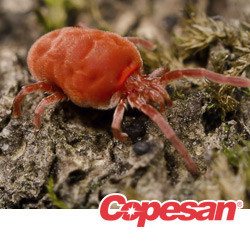 A defoliator is a term that refers to any pest that feeds on the needles and leaves of trees and shrubs. Oftentimes, the presence of such insects are low in numbers and damage is not severe enough to be noticed. At other times, a heavy infestation can strip the leaves or foliage of trees and stunt the growth or even kill the tree. Smaller, younger trees are most susceptible to such damage.
A defoliator is a term that refers to any pest that feeds on the needles and leaves of trees and shrubs. Oftentimes, the presence of such insects are low in numbers and damage is not severe enough to be noticed. At other times, a heavy infestation can strip the leaves or foliage of trees and stunt the growth or even kill the tree. Smaller, younger trees are most susceptible to such damage.
The varieties of defoliators are many and include a large number of beetles and caterpillars, including webworms, tent caterpillars and bagworms. While the defoliation from these insects may not always destroy the tree, it will weaken it to the extent it becomes vulnerable to other pests.
Defoliator Prevention Options
Under normal conditions, natural factors will control the number of caterpillars and keep damage to a minimum. However, the environment is sometimes favorable for growth and reproduction of any one of these pests, causing a heavy infestation that will merit commercial pest control. The control of defoliators can be very challenging. For some defoliators, like tent caterpillars and webworms, pruning the affected branch and destroying it will prevent additional invasion. Other infestations may be much more progressive and will require professionally applied chemicals. In extreme cases where hundreds of acres are affected, an aerial application of chemicals may have to be administered. A vast array of caterpillars and beetles necessitates proper identification for correct and effective treatment. Copesan pest control companies in your immediate area will correctly identify the pest for proper treatment.
Clover mites are foragers of pastureland, lawns, plants, shrubs and ornamental grasses. Landscape management is the best prevention insuring a reduction of risk of infestation. A clover mite is extremely small and measures only 1/30th of an inch. This is smaller than a pinhead and is very hard to detect. The heaviest infestations usually occur in the spring with the fresh growth of well-fertilized lawns. While the clover mite loves to enter homes and businesses, a combination of pest control and landscaping will be sufficient control from invasion of the home.
Adjust your landscaping by removing all vegetation from around the foundation, leaving an 18-24 inch bare strip of loose soil. Mites will not traverse across bare soil. Decorate your landscaping by planting flowers and bushes that are unattractive to mites. This can include geraniums, zinnia, marigold and petunia flowers as well as juniper, spruce and barberry shrubs. Then, cover the rest of the loose soil with pea gravel to further discourage mite invasion.
Finally, a visual inspection of trees, shrubs and ornamental grasses will allow early detection of the presence of defoliators and control them before a serious outbreak occurs.
For more information on commercial landscape pest management, please contact Copesan to find a Copesan Partner near you.
